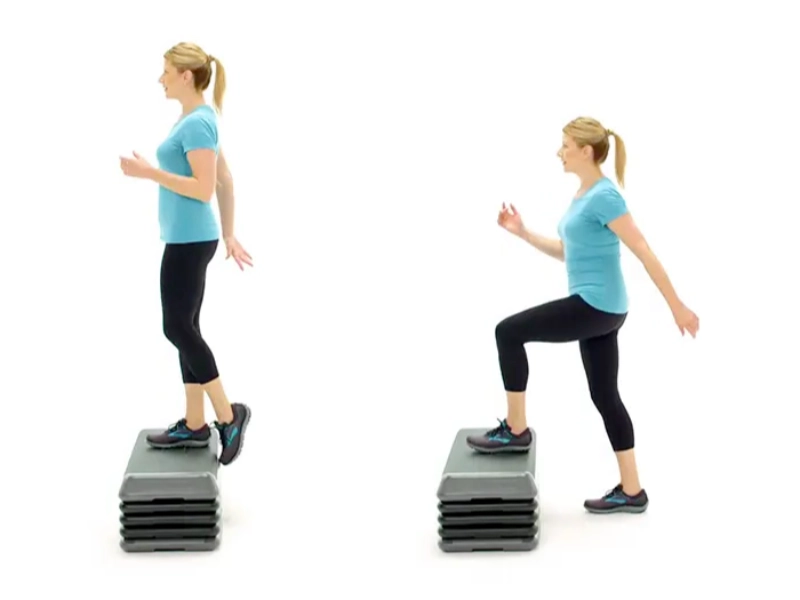If you want to increase your running pace, maintaining a consistent training plan is essential. On days when you're not running, start cross-training by taking part in other activities if you're a beginner. Try hill repeats or fartleks, such as running to a mailbox or street light and then jogging back down. These are great ways to increase your pace and build endurance.

 Hill sprints are quick, high-intensity sprints done up a hill at maximum speed. They are a great alternative to flat sprints if you want to improve your strength, power, endurance, and ability to accelerate and move quickly. The incline adds resistance
, increasing the force you exert with each step, engaging slow-twitch and fast-twitch muscle fibers. It also stimulates neuromuscular growth and strengthens the connection between your muscles and the central nervous system. The result is a higher maximum running speed, improved VO2 max, and increased strength and power from specific muscle fibers.
If you are adding hill sprints to your training plan, start conservatively. You should achieve a steady 4-6 repetitions. Take time to recover between sets, especially if you are just starting out with hill sprints. You don't want to start too soon and risk injury or fatigue. Try to make the last two repetitions a bit simpler than the first.
Hill sprints are quick, high-intensity sprints done up a hill at maximum speed. They are a great alternative to flat sprints if you want to improve your strength, power, endurance, and ability to accelerate and move quickly. The incline adds resistance
, increasing the force you exert with each step, engaging slow-twitch and fast-twitch muscle fibers. It also stimulates neuromuscular growth and strengthens the connection between your muscles and the central nervous system. The result is a higher maximum running speed, improved VO2 max, and increased strength and power from specific muscle fibers.
If you are adding hill sprints to your training plan, start conservatively. You should achieve a steady 4-6 repetitions. Take time to recover between sets, especially if you are just starting out with hill sprints. You don't want to start too soon and risk injury or fatigue. Try to make the last two repetitions a bit simpler than the first.
 A great addition to a running-focused training program is stair training. It's a high-intensity cardio workout that taxes your heart and lungs while effectively working your legs. Plus, it's a great way to incorporate bodyweight training and plyometrics into your routine.
Stairs, like hills, also strengthen your legs by shortening your stride length and focusing your explosive power. Plus, they help develop forward lean and hip drive, promoting speedier running on flatter terrain.
Brooks and Hamilton say you don't need to use a specific set for your training, as long as you have enough stairs and bleachers available. In the best case scenario, you want a set of inclined stairs. They need to be steep enough to get your heart rate up, but not so steep that it's difficult to climb up and down.
A great addition to a running-focused training program is stair training. It's a high-intensity cardio workout that taxes your heart and lungs while effectively working your legs. Plus, it's a great way to incorporate bodyweight training and plyometrics into your routine.
Stairs, like hills, also strengthen your legs by shortening your stride length and focusing your explosive power. Plus, they help develop forward lean and hip drive, promoting speedier running on flatter terrain.
Brooks and Hamilton say you don't need to use a specific set for your training, as long as you have enough stairs and bleachers available. In the best case scenario, you want a set of inclined stairs. They need to be steep enough to get your heart rate up, but not so steep that it's difficult to climb up and down.
 If you want to increase your running pace, be persistent and never give up. Many runners are able to increase their speed with more effort, but it takes patience and hard work. Finding a motivational support system or online community may help you stay focused and motivated as you work towards your goal. Ensuring you
eat a nutritious diet is also important. Eating the right nutrients will increase your strength and endurance, allowing you to run faster. When planning your meals, try to include a variety of proteins, carbohydrates, and fats.
Finally, I recommend working on visualizing your accomplishments. Many elite athletes employ this strategy, and it can be very helpful in helping you achieve your goals. To motivate yourself for your next big run, try visualizing yourself racing and the emotions you will experience on race day.
If you want to increase your running pace, be persistent and never give up. Many runners are able to increase their speed with more effort, but it takes patience and hard work. Finding a motivational support system or online community may help you stay focused and motivated as you work towards your goal. Ensuring you
eat a nutritious diet is also important. Eating the right nutrients will increase your strength and endurance, allowing you to run faster. When planning your meals, try to include a variety of proteins, carbohydrates, and fats.
Finally, I recommend working on visualizing your accomplishments. Many elite athletes employ this strategy, and it can be very helpful in helping you achieve your goals. To motivate yourself for your next big run, try visualizing yourself racing and the emotions you will experience on race day.